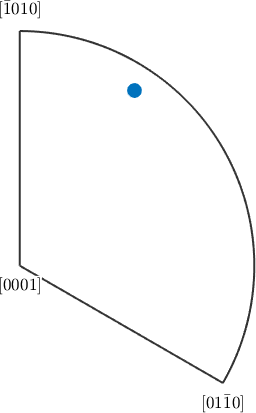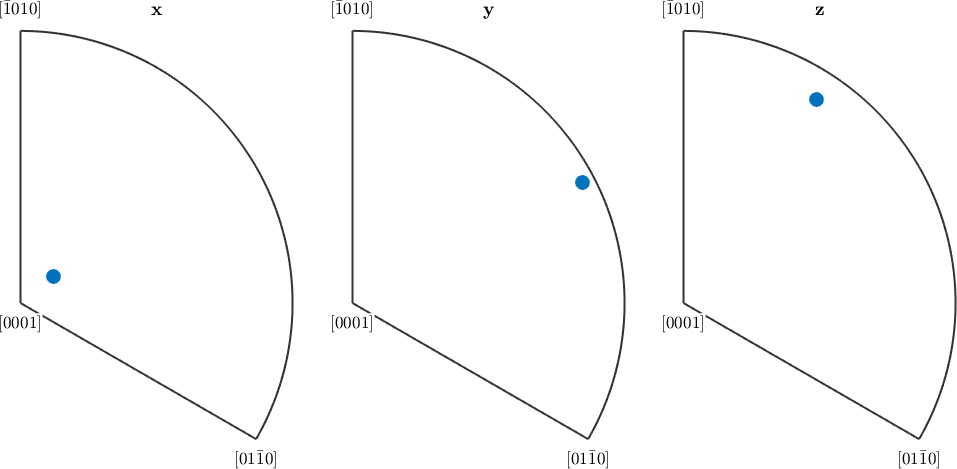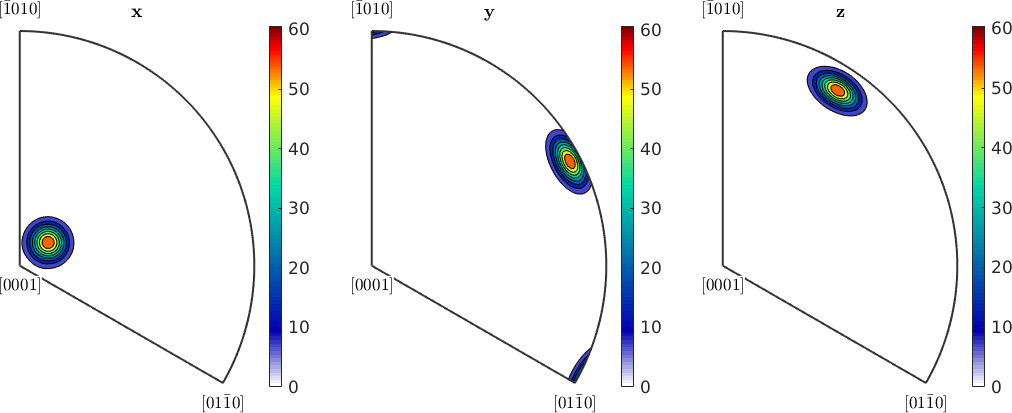Inverse pole figures are two dimensional representations of orientations. To illustrate this we define a random orientation with trigonal crystal symmetry
cs = crystalSymmetry('321');
ori = orientation.rand(cs)ori = orientation (321 → y↑→x)
Bunge Euler angles in degree
phi1 Phi phi2
156.958 161.468 197.878Starting point is a fixed specimen direction r, e.g.,
r = vector3d.Z;Next the crystal direction that aligns with specimen direction r according to the orientation ori is computed and plotted in a spherical projection
h = inv(ori) * r
plot(h.symmetrise,'fundamentalRegion')h = Miller (321)
h k i l
0.0667 -0.3025 0.2357 -0.9481
A shortcut for the above computations is the command plotIPDF which takes as second argument an arbitrary list of specimen directions r
% a pole figure plot
plotIPDF(ori,[vector3d.X,vector3d.Y,vector3d.Z])
Contour plots
Using the option 'contourf' we may turn those scatter plots into contour plots.
plotIPDF(ori,[vector3d.X,vector3d.Y,vector3d.Z],'contourf')
mtexColorbar
Note that by default only the fundamental sector with respect to the crystal symmetry is plotted. In order to plot the entire sphere use the option 'complete'.
plotIPDF(ori,[vector3d.X,vector3d.Y,vector3d.Z],'contourf','complete','upper')
mtexColorbar